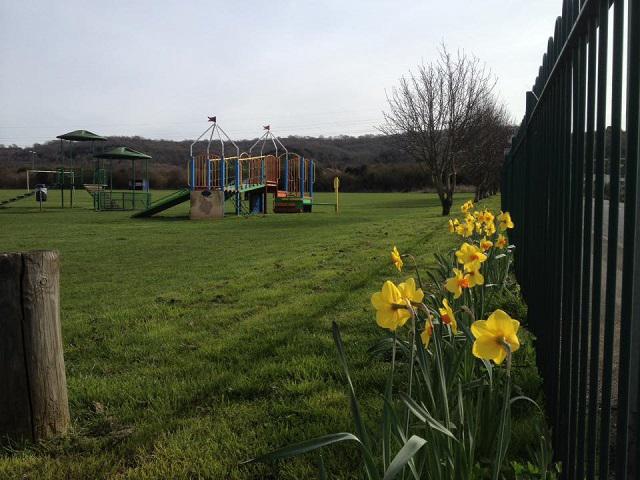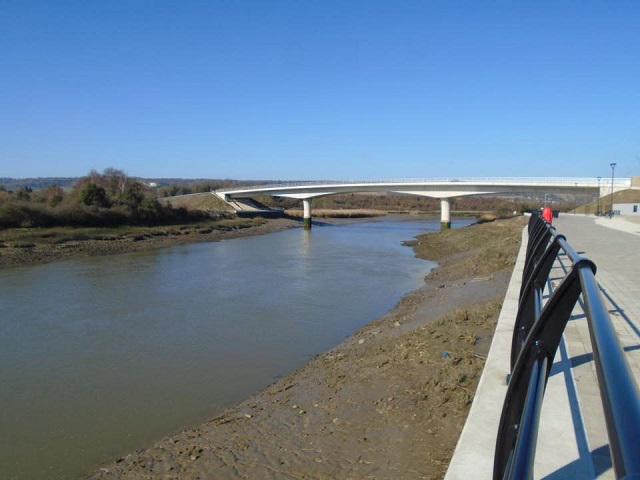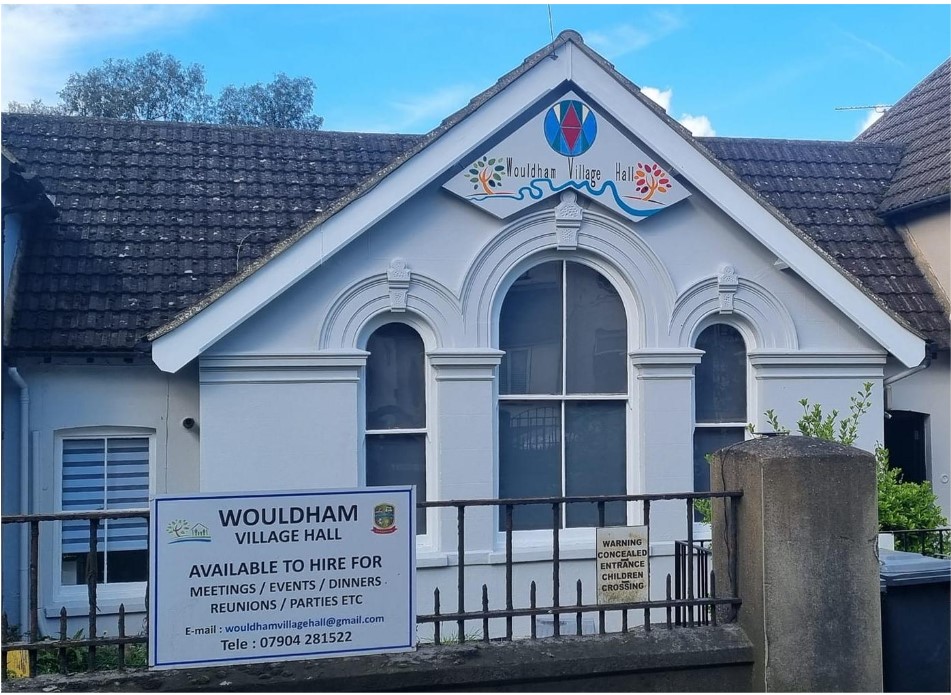-
07904 281522
THE PARISH OFFICE WILL BE CLOSED FROM 18TH DECEMBER - 5TH JANUARY, 2026
COUNCILLORS AND STAFF WOULD LIKE TO WISH YOU ALL A VERY HAPPY CHRISTMAS AND PEACEFUL NEW YEAR


Wouldham is a village within the borough of Tonbridge and Malling. It is nestled between the River Medway and the southern side of the North Downs and comprises of two very different areas.
The older part of the village dates back to 751 A.D where a Saxon record showed King Ethelbert of Kent giving "Wuldeham" to the Church of St Andrew in Rochester, which later became the Catholic Church. Up until the mid-1800s, Wouldham's working population were mainly agricultural workers. However, this was soon to change, with Wouldham becoming at the forefront of the cement making industry, having both the Wouldham Court and Peters/Wouldham Hall works operating on the banks of the river. It is said that Peters Cement works were so famous that you send a letter from anywhere in the world, addressed to Peters Wouldham Hall Cement Works, England and it would be delivered.
In 2011 its population was approximately 1500, which has increased since 2017, with substantial housing development to the south of the village. It has an 11th-century church, two schools – a primary school and one for those with special educational needs, and two public houses; The Medway Inn and The Waterman's Arms.
The newest part of the village, known as Peters Village, is an area of new housing being constructed since 2014 to the south of the existing village on the former Peters Wouldham Hall Cement Works and in Peters Pit. It consists of 1000 houses grouped in three sectors: the Village Centre, Lower Peters Village and Upper Peters Village. It includes a new primary school, (relocated from the old village), community centre, playing fields cycle way and riverside esplanade together with a new road bridge across the River Medway. The site is sensitive as it lies adjoining a Site of Special Scientific Interest and the North Downs AONB. The plans were approved in 2006 but postponed due to the economic downturn. Construction started on the infrastructure in 2014. The first apartments and houses were occupied in late 2017. The project, which received £19.5m from the government, was due to be completed by 2024 with a new crossing over the River Medway to link with the A228 road, the Peters Bridge, opened in September 2016.
History, Charm & Community Spirit
Latest Parish News
Flood Advice (source: GoCompare)
27

Flooding can have an unexpected and potentially devastating impact on your home, but there’s lots you can do to help protect your property.
Planning ahead and putting in place some preventative measures to keep the water out can help. So can making sure you have the right home insurance in place. Here’s what you can do to prepare for rising water levels and if your property gets damaged by floodwater.
How to prepare for a flood
If you live in a flood-risk area, there are several steps you can take to get your home flood-ready. That way, you can limit potential damage and it also can help if you need to claim on your home insurance.
Read our top flood prevention tips below:
· Find out if you live in an at-risk area - Check if you live in an area with a long-term risk of flooding. You can do this by entering your postcode into the following government websites: gov.uk for England, sepa.org.uk for Scotland, naturalresources.wales for Wales, and nidirect.gov.uk for Northern Ireland
· Sign up for flood warnings - The above websites provide live updates on flood warnings, as well as river, sea, groundwater and rainfall levels. You can also sign up for flood alerts by providing your address and choosing to be contacted by either phone, text or email. For live updates and advice, call Floodline at 0345 988 1188
· Make a personal flood plan - This should cover all the things you need to do before, during, and after a flood. It should include details of items you might need to move, where to go for help, and who you might need to help. You should also note down things like where to get sandbags and how to shut off your gas, water, and electricity supply
· Prepare a flood kit - This should be kept in a safe place and include contact details you might need, like emergency numbers for your local authority and home insurance provider. Plus, items like warm waterproof clothing and blankets, drinking water, food, essential medication, a torch, gloves, wellingtons, pet food and carriers
· Take preventative measures - If a flood is expected in your area, there are plenty of things you can do to help protect your property. You can find a list of measures on how to prepare for flooding on gov.uk, these include:
· Moving furniture, rugs and items of value upstairs or raising them up off the ground if this isn’t possible
· Placing perishable things in waterproof bags
· Filling containers with clean water
· Turning off gas, water and electricity supplies
· Blocking water entering through doors and windows with sandbags or pillowcases filled with earth
· Covering airbricks and vents
· Blocking water inlet pipes with towels or cloths
· Throwing curtains over the rail out of reach of the flood water
· Moving your car to higher ground and somewhere away from risk
Making preparations like these can also help if you need to make a home insurance claim, as your policy might not pay out if the damage was avoidable.
There are also long-term flood resilience measures that can be used for properties at high risk of flooding.
What to do when your house floods from rain
Heavy rainfall can lead to leaks in your roof, or problems in your basement if there’s groundwater flooding.
But if persistent rain causes nearby rivers and streams to burst their banks, your home could be facing even more serious issues.
Flooding can quickly cause chaos. But once it’s safe to return and you’ve dealt with the immediate damage, there are several things you should do to help get things back on track:
1. Contact your insurance company
If flooding has caused serious damage, you’ll need to contact your insurance company as soon as possible and follow their advice - most insurers have a 24-hour helpline.
Explain the situation and find out whether you’ll need alternative accommodation. Depending on the damage, they might send a loss adjuster to assess your home, so ask how long this will take.
Once it’s safe to go into your home, you’ll need to monitor and record the damage. Take photos and videos before you start cleaning up, and use a permanent pen to mark the height of the flood water in every room affected.
If you haven’t got home insurance, the National Flood Forum can offer help and support.
2. Find your local flood action group or flood warden
If the flooding is serious in your area, find out if there’s a council-run flood hub set up somewhere, like the town hall.
Recovery efforts will be organised from here and it’s the first place you should go to get up-to-date information, support and advice.
3. Check if you can return home
If the flooding meant you had to leave your home, don’t be tempted to go back in until you’ve checked it’s safe to return.
You might need to get the all-clear from the emergency services first. And your utility companies might want to do a safety inspection before your gas, electricity and water are turned back on.
4.Secure your home
Once you’re able to go back into your home, check whether the external doors and windows are still secure.
It’s important to make sure thieves and opportunists don’t have easy access to your home while it’s empty.
Close all doors to rooms that are unaffected and move any valuables to somewhere lockable and secure.
What is groundwater flooding?
Groundwater flooding happens when the level of water in the ground (known as the water table) rises after long periods of heavy rain.
Unlike a river bursting its banks or the surface water you sometimes see on roads, this type of flooding is much less visible.
When the saturation from below reaches ground level, water begins to seep through the surface. At this point, it might come up through the floors and walls of underground rooms - like cellars and basements - so you might not notice it for some time.
Groundwater flooding typically happens gradually and might occur several days, weeks or even months after heavy rain. It mainly occurs in areas with chalk or high levels of sand and gravel under the ground, so some parts of the country are more at risk.
What should I do if the floodwater is deeper than one metre?
If the floodwater outside your home is more than a metre deep, it’s actually better to let it come into your home.
That’s because your property’s walls might move, crack or collapse under the weight of water pressing against the building. This could cause serious structural damage.
It’s dangerous to stay in your home in these circumstances unless advised otherwise by emergency services.
Once the flooding outside has receded, you’ll likely need to use a water pump to remove the water in your home. But if the water outside or inside reaches a metre or more in depth, get a structural engineer to check if any structural repairs are needed.
What are Property Flood Resilience (PFR) measures?
These are special measures or modifications that can be added to a property to lower its risk of water damage. They’re generally used for homes at higher risk of flooding.
PFR measures can be permanent or temporary. They’re designed to reduce the risk of water entering the property and speed up the recovery process if any does find its way in.
Examples of PFR include:
· Flood barriers - A removable barrier is slotted into special channels fitted on either side of external doorways and windows. When there’s a risk of flooding, the panel is put across the doorway to create a seal that stops the water from entering
· Flood doors and windows - These work like regular doors and windows, but when they’re closed, they create a watertight seal. They provide year-round protection but require annual servicing and maintenance to make sure they stay effective
· Smart air bricks - As soon as water enters the self-closing brick, valves inside it close to prevent floodwater from reaching the wall cavity. A cheaper alternative to this smart option is to fit flood covers to regular air bricks
· Non-return valves - These special valves are fitted to water and sewer pipes to prevent backflow from coming into the home. They can stop water coming in through the bathroom and kitchen appliances, preventing internal flooding and pollution
· Water-resilient walls and floors - Using water-resistant paint and waterproof wall boards can reduce the amount of flood repair work needed. Similarly, using specially treated floor timber reduces water absorption and speeds up the drying-out process
Is my property at risk of flooding?
According to the Environment Agency, 6.3 million properties in England are at risk of flooding.[1]
To find out if your home could be affected, start by checking whether your local area is likely to flood. You can do this by using the long-term flood risk tool on gov.uk. This can help you prepare for potential flooding.
There’s likely to be extra information available on nearby flooding from your local council. And your area's lead local flood authority (LLFA) might be able to tell you about the risk of surface water flooding near you.
But this doesn’t tell you how likely your individual property is likely to flood or what the flood risk is from other sources, like blocked drains and burst pipes.
For the most accurate answer, you’ll need to get a flood-risk property survey on your home by a chartered surveyor or civil engineer. If you’re buying a new home, make sure you understand what the potential risk of flooding is before you go ahead with the sale.
What is flood insurance?
Flood insurance is part of your home insurance that provides financial protection if your property is affected by flooding.
If you have buildings insurance it can cover the cost if the structure of your property needs repairing or rebuilding following floodwater damage. And if you have contents insurance, it can pay for repairs or replacements if your possessions are damaged.
What does flood insurance cover and how does it work?
Flood insurance covers floodwater coming into your home from outside, usually after heavy rainfall. It’s not the same as cover for something like a leak or burst pipe.
It can cover costs related to extensive water damage, where more than one area of your home is affected.
For buildings insurance, it can cover the cost of:
- Drying out your home
- Removing debris
- Professional fees, like surveyors, solicitors and architects
- Alternative accommodation until you can return to your home
- Repairing the structure of your home
For contents insurance, it can help with repairing or replacing:
- Damaged furniture, carpets, lamps and sofas
- TVs, computers and other electrical equipment
- Fridge freezers, washing machines and other kitchen appliances
- Clothing, books and toys
How can I check if I'm already covered?
Policies can vary, so you’ll need to read your policy wording carefully. If you’re still unsure, get in touch with your insurance provider.
Your policy will show what you’re covered for, the policy limits and your excess.
If you’ve claimed for flooding in the past, you might need to pay more for your home insurance, or flooding might be excluded from your cover.
If you live in a flood-risk area and you’re struggling to find insurance, the Flood Re scheme might be able to help. It has a list of insurers who work with homes at risk of flooding and the scheme helps to keep your premiums down.
How do I claim for flood damage on home insurance?
If you have separate buildings and contents insurance you might need to claim with two different insurance providers. But if it’s a combined policy, you’ll only need to contact one.
A flood damage claim often involves the insurer sending a loss adjuster to your property to assess the extent of the damage before the claim can be progressed.
To claim on your home insurance, you’ll typically need to take the following steps:
- Have your policy number and details to hand
- Contact your insurer as soon as possible, many have a 24-hour emergency line
- Keep a record of all correspondence, including the time and date of phone calls and who you spoke to
- Collect proof, like photographs and videos, and receipts for damaged items
- Don’t repair or throw anything away (other than spoiled food and items dangerous to health) until the loss adjuster has visited your home
- Review the loss adjuster’s findings and report
- Receive the insurer’s proposed settlement or its decision on your claim
- Decide whether to accept the settlement or appeal if your claim is rejected
- If you’re unhappy with the decision or how your claim’s been handled, you should go through the insurer’s formal complaints process. If there’s no response within eight weeks or you disagree with the final response, you can then complain to the Financial Ombudsman
Lets keep Wouldham tidy and free from Fly Tipping why not download the app from Country eye and help keep the countryside safe
Wouldham Parish Council invite you to explore this new website and we hope you enjoy its many new features













